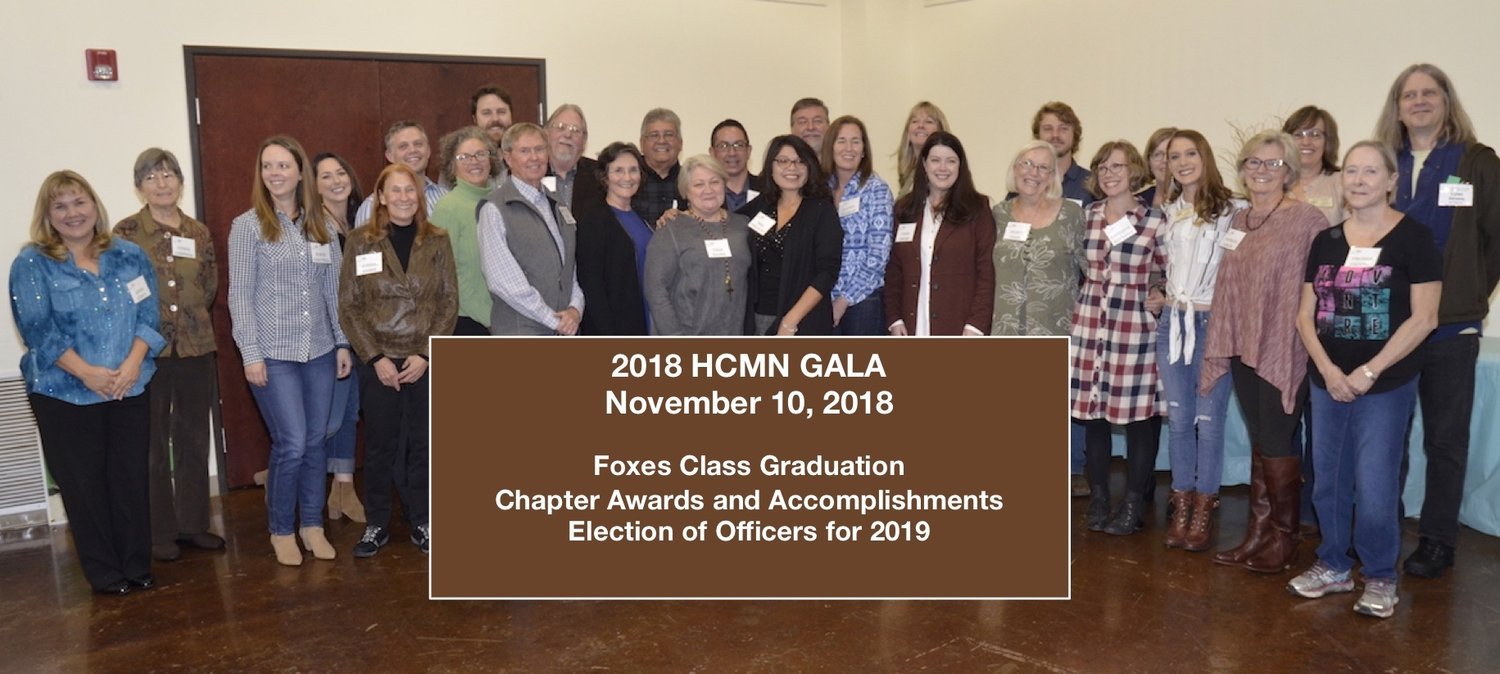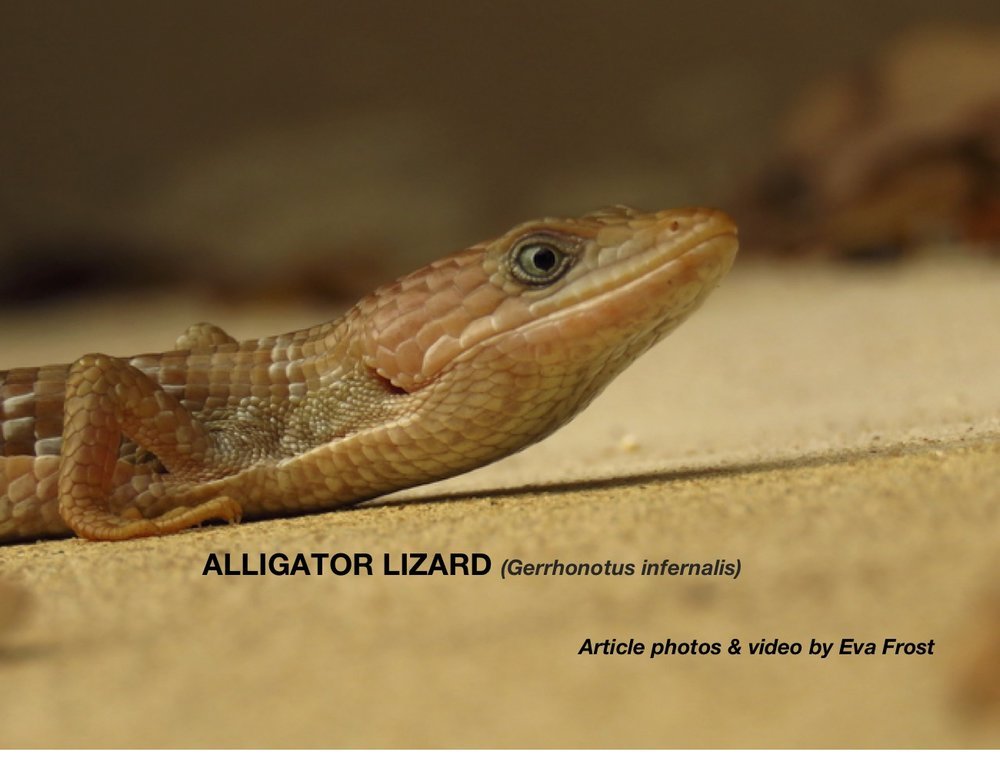The HAYS HUMM - December 2018
TOM JONES & BETSY CROSS
BETSY AND TOM ARE TAKING A HOLIDAY BREAK
The Newsletter will return in February 2019 with our 1 year Anniversary Edition.
DEB BRADSHAW
About Myself: I am in my 10th year as a HCMN, but have always loved nature. Growing up in upstate NY, parents sent their kids outdoors and told them to be home by dark. We'd fill our time swimming in a beaver-dammed lake, picking apples and cherries for lunch, and building snow forts in the winter. My Grandfather taught me to hum quietly to keep his bees happy when helping him in the honey house. When I was in high school, my family moved to Houston. Living in the Clear Lake area, the humidity and mud seemed to be some version of hell. I didn't learn to love Texas until I arrived into Austin & UT.
What You May Not Know: Let's make this fun. One of the following statements is fake news.
My 3 kids were born in England, and called me Mummy until we moved back to California.
I worked with an organization of socialist lawyers for 10 years.
I own a portion of a New Zealand winery.
Swimming with whale sharks off the Ningaloo reef in Australia was one of my life's greatest thrills.
My 11th generation ancestor, Mary Eyre, was hung as a witch in Salem.
Favorite MN Project: I sampled a variety of MN projects before discovering that the greatest reward is seeing a child's eyes light up with new interest & enthusiasm for nature. I love teaching field trips and guiding tours at Jacob's Well, the Blue Hole and Canyon Gorge.
SUZANNE DAVIS
About Myself: I am a retired educator (public school librarian...12 years at the high school level) and yes, I loved it. I can’t imagine a more stimulating learning environment, which is necessary for me to stick with something. Being a librarian was the best possible job for me because it allowed me to cross all disciplines and work with many different interests among students and staff. I was never bored. Becoming a master naturalist in 2012 provided the same opportunity to learn about the many areas of interest in the natural world and to work with interesting people that knew an amazing amount of information. My main volunteer spot has been Jacob’s Well (Guide, Nature Center, Outdoor Educators, etc.), and one of the things I love about working at Jacob's Well is all the interdisciplinary learning that goes on. Water, Riparian plants, Wildflowers, Grasses, Geology, History...see what I mean...the list goes on and on and there is always something new to learn.
What You May Not Know: I lived in London for almost 3 years, love to travel and have classical ballet in my background. I love being a part of the Wimberley community at large and participate in many different learning groups including a French class on Mondays and a ballet class on Fridays.
Favorite MN Project: Anything involving education in the community...JW Guides, JW Nature Center, Outdoor Educators, Riparian Restoration with neighbors and community.
Bird you most identify with and why: Harris’s Hawk: The Harris’s hawk, unlike other raptors, will hunt in cooperative groups. Some fly ahead as scouts, some flush out the prey… they divide and conquer and do differing task in order to accomplish their goal. I find it very satisfying to be a part of a group working toward a goal that might not be attainable otherwise. When working in a group, I enjoy encouraging others to find their niche so they can use the skills they are the best at. This makes for a less competitive environment and keeps the focus on attaining the goal together, cooperatively.
On the first Saturday in November, Hays County Master Naturalists teamed up with the Hays County Parks Department staff at Jacob’s Well to host a Monarch Marathon. The event was led by HCMN Melinda Seib and Quincy Kennedy, Park Specialist - Education & Outreach.
Special guests, Gracy Belle Broussard and Richard Lindley, told of their ground-breaking work with the researchers and scientists in Mexico who were the very first to study the monarch migration. Under the shade of an oak tree just outside the Nature Center, Gracy shared this story with the children, their parents and grandparents.
GRACY’S STORY
Every year the Mexican people honor their deceased relatives with many beautiful flowers on a special day called The Day of the Dead. In a particular region, high in the mountains of Mexico, this celebration coincides with the return of millions of migrating monarchs to roost and overwinter in the branches of the Oyamel trees. The people of the region love the monarchs, and the monarchs enjoy the nectar of their numerous flowers. But one day the monarchs did not come and the people thought it was because of the researchers. They did not understand that it was really due to the over-harvesting and decline of the Oyamel trees, which were used by the people for houses, furniture, and firewood. They did not understand the important role the large fir trees played in supporting the life cycle of their beautiful butterflies. With the help of the researchers and local conservationists, a sanctuary was established to protect the trees.The people of the region are learning how to carry on with their livelihoods while also preserving the forests for the monarchs.
HCMNs led the visitors on a hike below the Nature Center to learn about monarchs and to see plants that supply them with nectar on their journey.
Monarchs and other butterflies were seen congregating on the Shrubby Boneset that flourished along the limestone outcroppings.
Making Origami Monarchs with Irene
Coloring Monarch Pictures with Katherine
Gracy and Mel
“With a little flyer promotion and by word of mouth, 38 guests and their children from Wimberley and beyond attended our morning event; by end of day 58 individuals had walked through our door and participated. Those who arrived too late for the morning hike were offered southern hospitality of a second guided tour set for noon; 18 adults and children joined in that group.
We used a method of storytelling: talking about a 3000-mile Journey and the mystery of the monarch.
We incorporated a hike and trail interpretation: explored and learned how to distinguish and identify Monarchs as they travel through our Texas corridor, where to look for them, and the plants that help them along their journey in the fall.
Nature Center Exhibits and other methods used on this day were a Monarch Power Point Presentation, a touch screen kiosk interactive map of the real-time monarch migration among other monarch information, and a slide show photography collection of other species found at Jacob’s Well Natural Area.
Three craft activities taught how to identify the monarch and where it over-winters.” Mel Seib, Report of WILD Education Day
Many thanks to the HCMNs who supported this event: Mimi Boelter, Irene Bonde, Deb Bradshaw, Betsy Cross, Tom Jones, Dana Martensen, Melinda Seib, and Katherine Senftleber; also to guest presenters Gracy Belle Broussard and Richard Lindley; and to Quincy Kennedy and the staff at Jacob’s Well.
And in the spirit of Thanksgiving, we could not have been more grateful for the complete cooperation of Mother Nature - the beautiful day, the perfect weather, and most importantly the Monarchs, the Queens, and the other butterflies who arrived and performed magnificently on schedule!
A year ago, I joined the Wimberley Outdoor Educators (WOE) team supporting the Jacobs Well Elementary School students on a field trip to the Blue Hole Regional Park. Jackie Mattice assigned me to work the water station and one topic was to explain how the Blue Hole was formed. It was then I realized that my knowledge of how the Blue Hole works was not very good. That question has stuck with me throughout this year and I have worked to better understand how the Blue Hole was formed and where the water comes from. Here is what I discovered.
Jacob’s Well
Jacob’s Well Spring, March 2018 under low flow conditions (1800 gpm). Note clear view of fracture extending downstream from cave opening.
The easy answer is that the water you swim in at the Blue Hole comes from Cypress Creek. Everyone knows that, but what part and what is the hole? Cypress Creek’s length is 14.4 miles, but it is dry for the 9.5-mile upper segment above Jacob’s well. Over 65% of Cypress Creek is not contributing significant surface flow down to the Blue Hole. Only during high rainfall events does the dry upper segment actually flow. The 4.9-mile creek segment below Jacobs Well has a continuous flow. Nearly all of the creek flow in this section is groundwater coming to the surface via springs. There are three major spring flows within this stretch providing water to Cypress Creek and ultimately the Blue Hole.
Jacob’s Well spring is the headwaters of Cypress Creek, flows most of the year and is a significant contributor to the Creek. Looking at the volume of water at the Blue Hole leads me to believe that the flow from Jacob’s Well is supplemented by additional springs. Take a look at the photo of Jacobs Well spring in March of this year. This was during a moderate drought and the flow was only about 1800 gallons per minute. Also note the absence of the pool. The downstream dam that creates the shallow pool at Jacobs Well was bypassed due to repairs allowing a view of the actual spring flow. The photo illustrates how the drought and increased pumping have impacted Jacobs Well. Some good news, the many months of recent rains have brought Jacobs Well flow rate up to almost 8,900 gallons per minute as of November 13.
Eagle Rock
Eagle Rock cliffs in background. Note large pool and swimming area within Cypress Creek downstream from low water crossing
Cypress Creek
Large pool upstream of Cypress Falls low water crossing, near youth camp.
I live about a mile from the Cypress Falls low water crossing on Woodcreek Dr. I am always in this area, meeting friends, eating some good food and looking at the great swimming hole just behind the lodge. This area is known as Eagle Rock. There are large pools above and below the low water crossing. They are a beautiful sight. Even though the pools are a result of low dams, there is a lot of water flowing here, more than what I see coming out of Jacobs Well. All of these signs point to a set of springs in this area. A quick look at the geologic map confirms that two segments of the Tom Walker fault slice though Cypress Creek right in this area. I already know that Jacob’s Well spring was created along a fracture zone which is right in line with the Eagle Rock area. These are the perfect conditions to create springs in the Wimberley Valley. The water from these springs at Eagle Rock joins with the flow from Jacob’s Well and continues down Cypress Creek to the Blue Hole.
Blue Hole
View of the deep pool next to the rope swing.
Ever since I did my first launch off the rope swing, I have wondered if there are springs at the Blue Hole? When you enter the water, that deep cold pool feels like spring fed water, this is the “Hole” at Blue Hole. Also known as the deep end. Over the years I have been swimming at the Blue Hole, that deep pool has never filled up with rocks or sediment, even though the area has seen many big floods. I think this pool maintains its depth from a strong spring flow that removes debris deposited into it. I have seen the same thing when I take the Glass-Bottom Boat excursion onto Spring Lake in San Marcos. The boat passes above many impressive springs which can be easily observed by looking through the glass bottom. The springs are always the deepest underwater view you get. My interpretation is that the flow of the water self-cleans the area around the spring moving rocks and sediment away, creating a hole. This same process is happening at the Blue Hole. My take on the geologic setting is that the subsurface fracture zone observed at Jacob’s Well extends past Eagle Rock and intersects the Wimberley Fault at the Blue Hole. The fault allows the water moving though the fractures to flow to the surface creating the spring at the Blue Hole.
Signs of a Spring
This single mature cypress tree is growing next to the cliff face at the Blue Hole Park. It is removed from the many cypress trees along the creek bank. This tree is an indicator of a spring. I suspect that its roots extend into the subsurface water flow. Very likely the same spring that is responsible for the “Hole”.
The WOE Blue Hole field trip was cancelled this year due to the very cold weather in November. Hopefully it will be held next year, and Jackie lets me work the water station again. I’ll be ready with my answer. Or maybe just the short version.
MESSAGE FROM TOM JONES & BETSY CROSS
THANK YOU FOR ALL THE SUPPORT!
Your contributions help the Newsletter showcase the entire HCMN Chapter
To the HCMN Board for their oversight, monthly review/feedback of newsletter, encouragement, acting advisors (Art Arizpe is Communications Director and newsletter is his responsibility)
Scarlet Buckeye with Eastern Tiger swallowtail Butterfly. Photo by Donna Browning
Jane Dunham – for her hands-on support for the website and the newsletter development effort
Hope Shimek – for all her previous work on the newsletter and her many contribution of photographs - February-Present
Anne Child – President’s Message and support of newsletter editing and development
ARTICLES
Bonnie Tull – Bluebird Project – February
Marilyn Brister – Discovering Spiny Hackberry – February
Mary O’Hara – Chapter Field Trips and 2018 State Meeting
Jackie Mattice - Wimberley Outdoor Educators – April
Hiram Perez – Blanco Watershed - May
Sun Gatto – Flotsam and Jetsam of a Master Naturalist’s Mind - July, October
Andy Witkowski – HCMN Class Field Trips and Snake Night– June, July, September, October
Kenneth Dees – Fish Attractor Project – August
Susan Nenney and Christine Byrne Interviews – Reclaiming Beauty – A Story at Blue Hole – September
Beverly Gordon – Why I Love Volunteering at Westcave Preserve – September
Eva Frost – Dragonflies On the Fly – October
Scott's Oriole, aka One Leg Jack. Returns to visit every year. Eva Frost
PHOTOS
Eva Frost
Talon Dancer
Donna Browning
Tom Watson
Tom Hausler
Joe Halton (Brother of Bonnie Tull)
Meagan Whitehouse
Gena Fleming
A special THANKS to Jane Dunham and Eva Frost for the Gala photos
SOCIAL PHOTOS
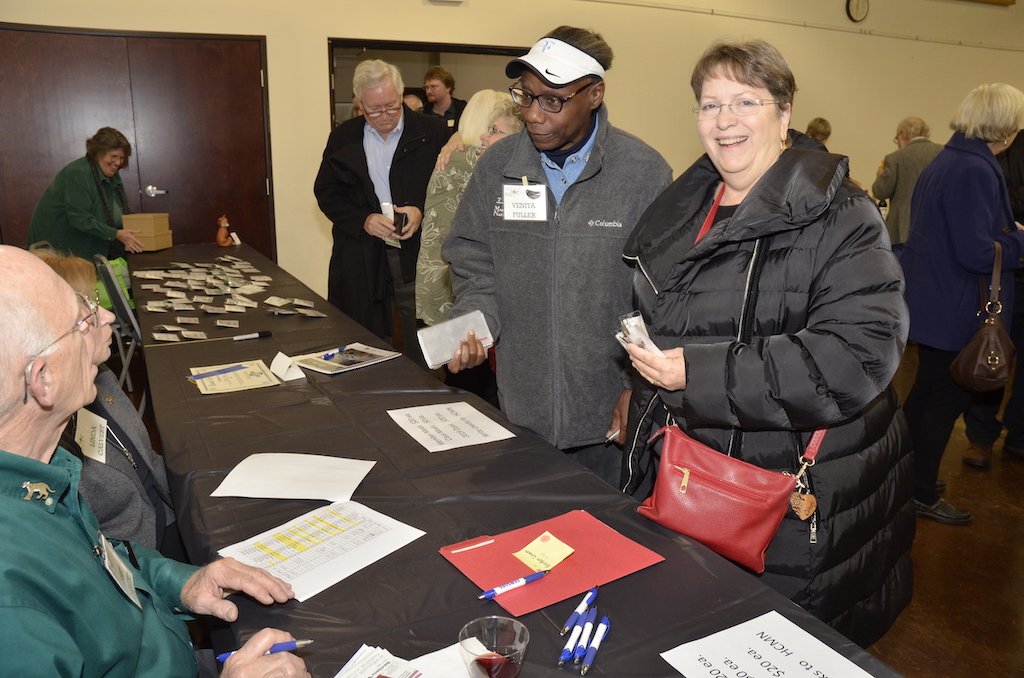





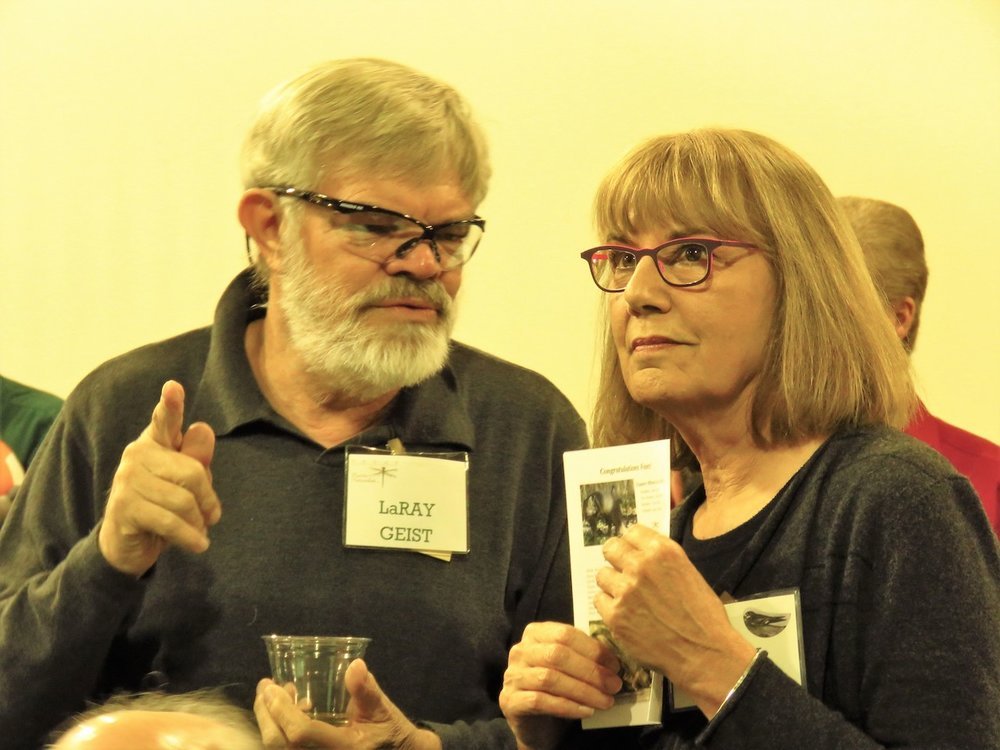
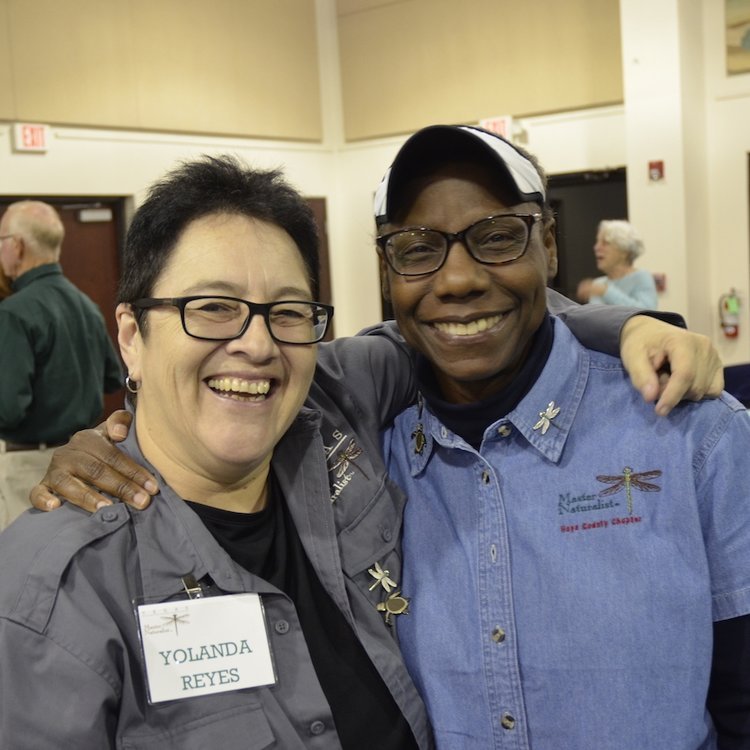
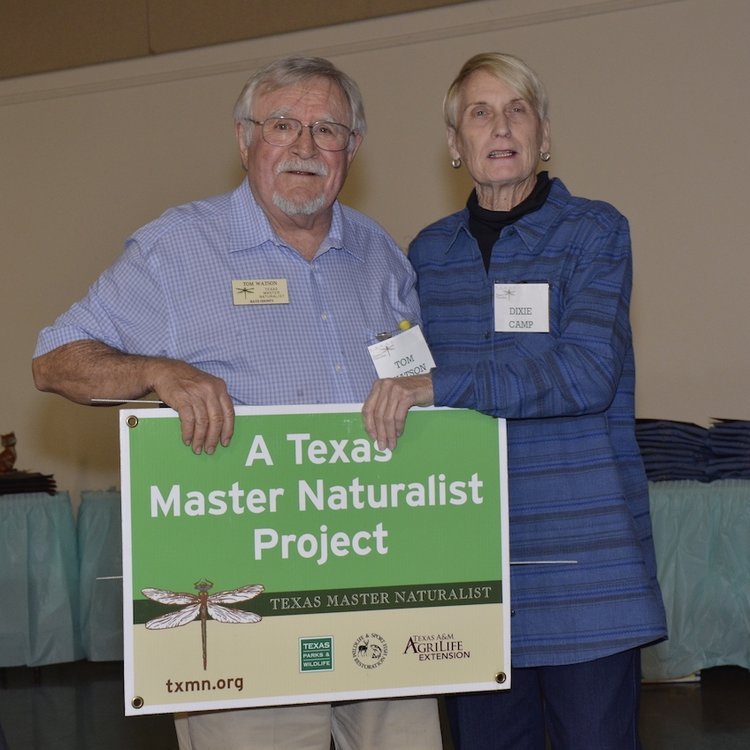
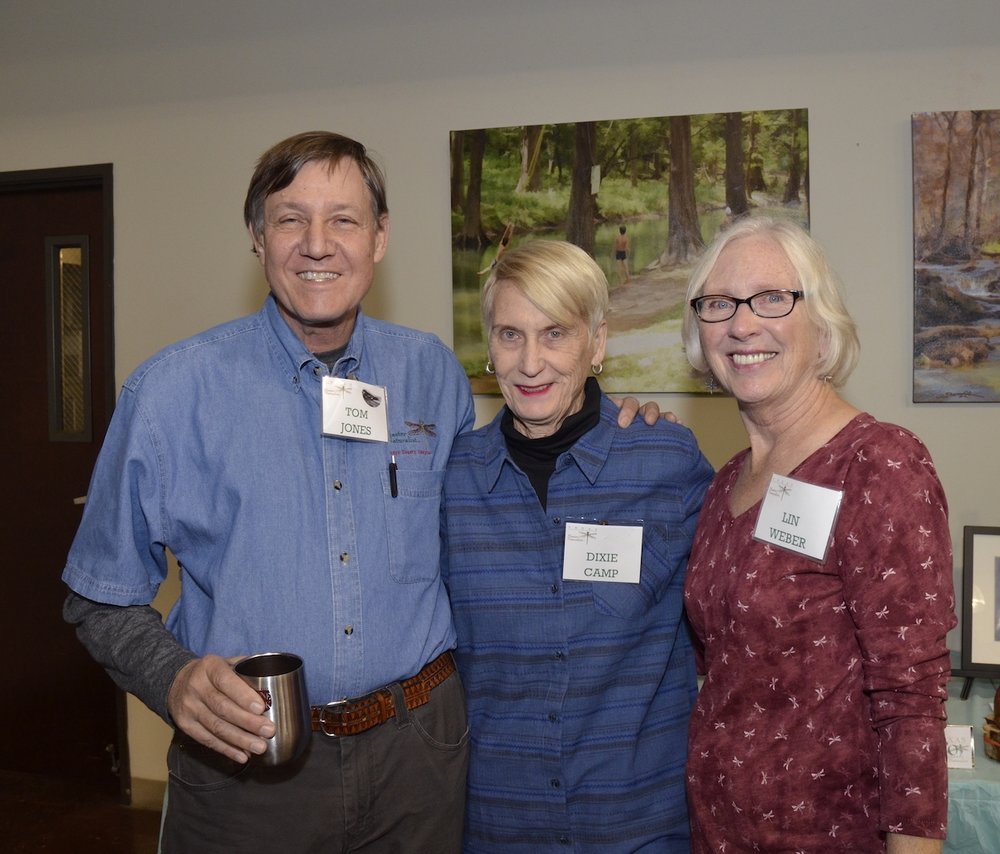
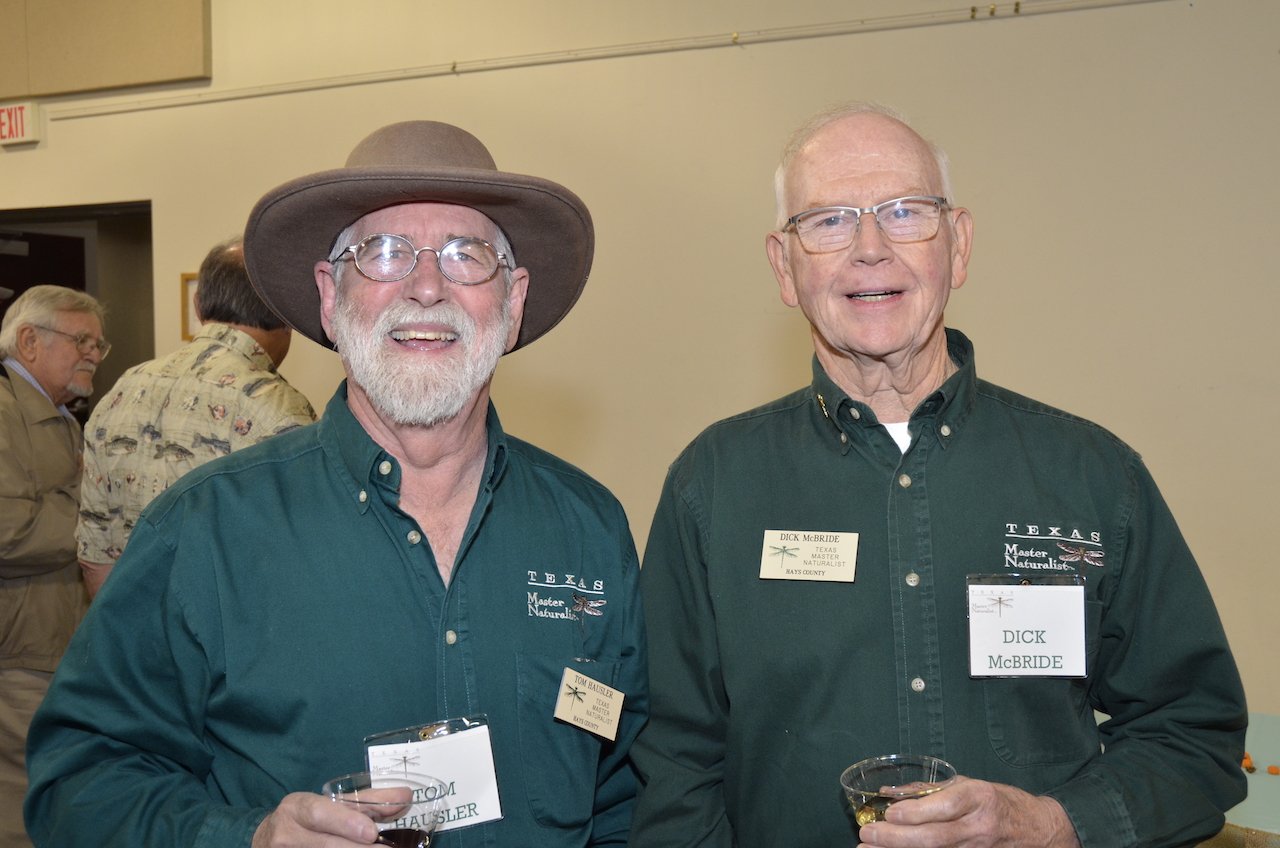
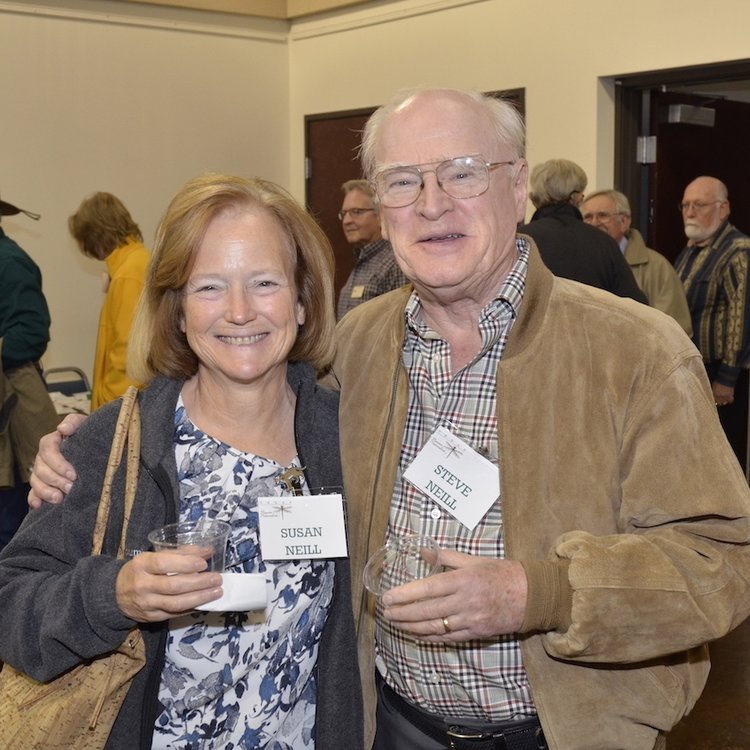
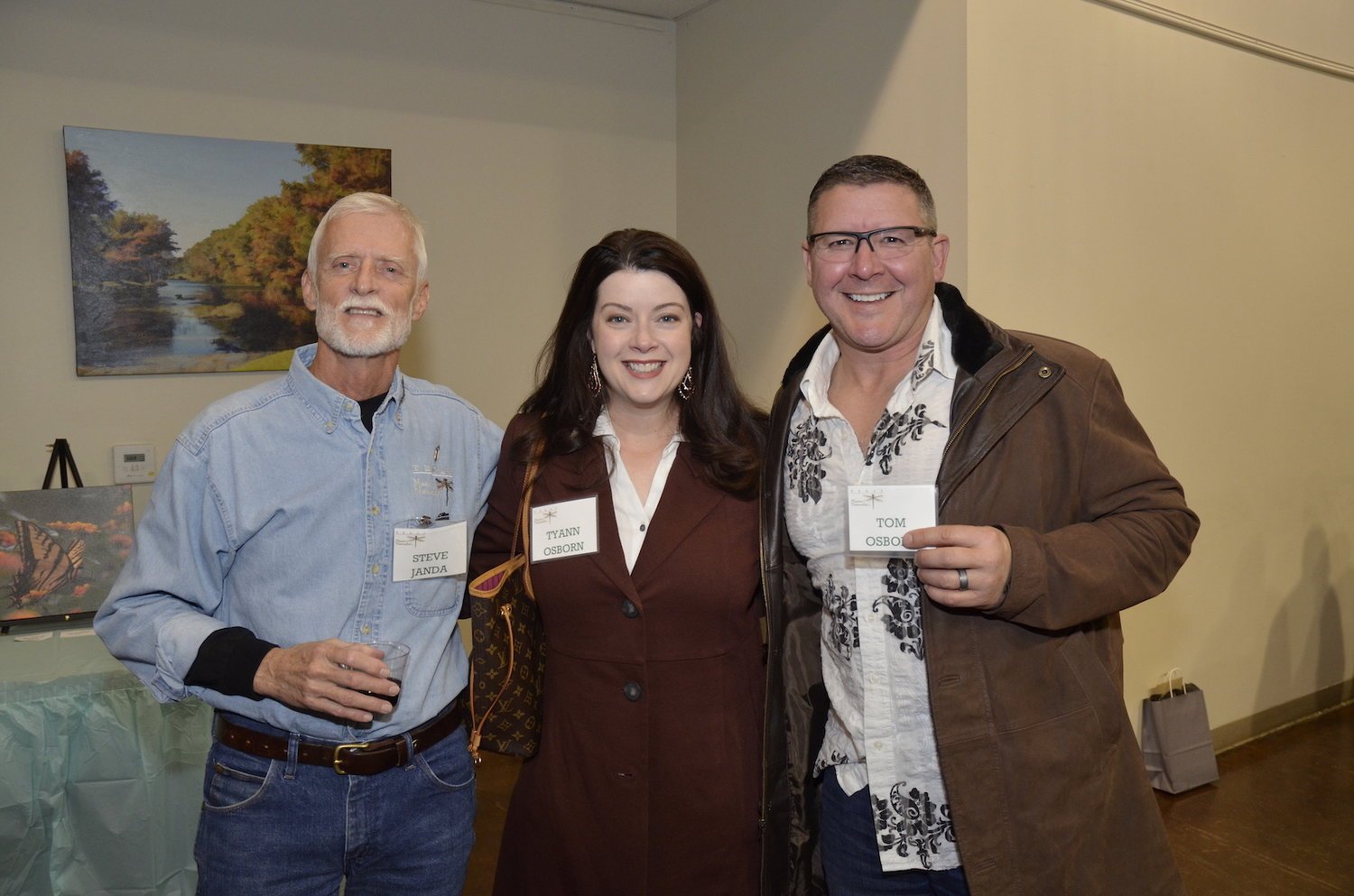

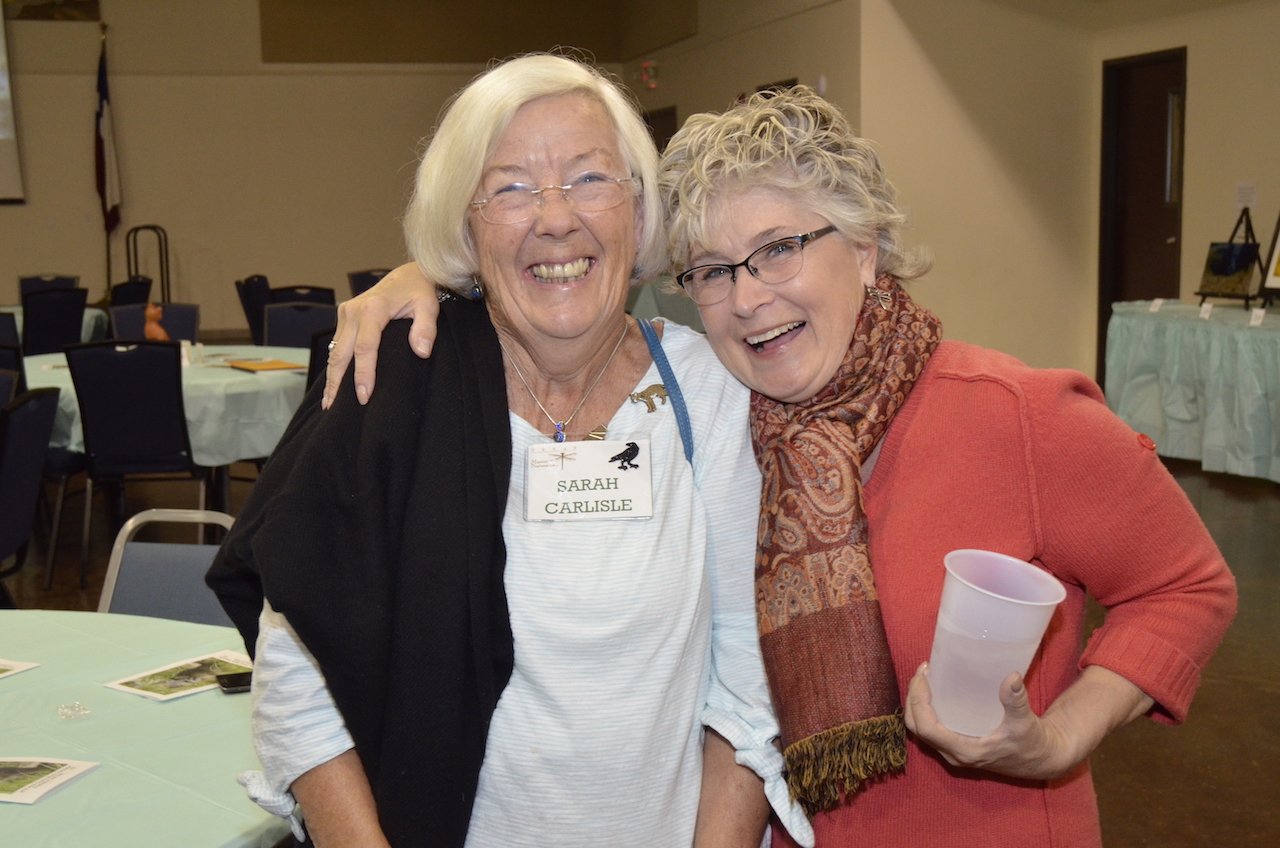
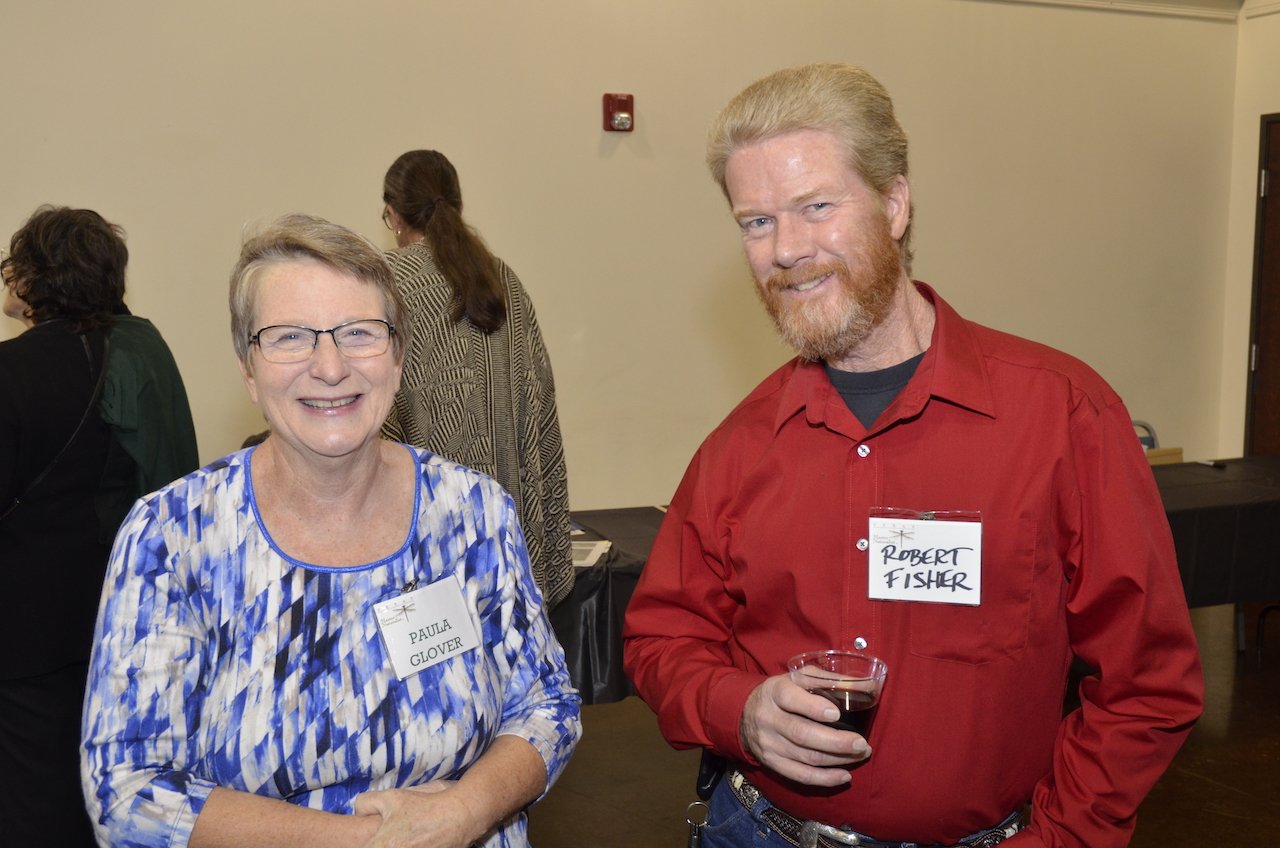
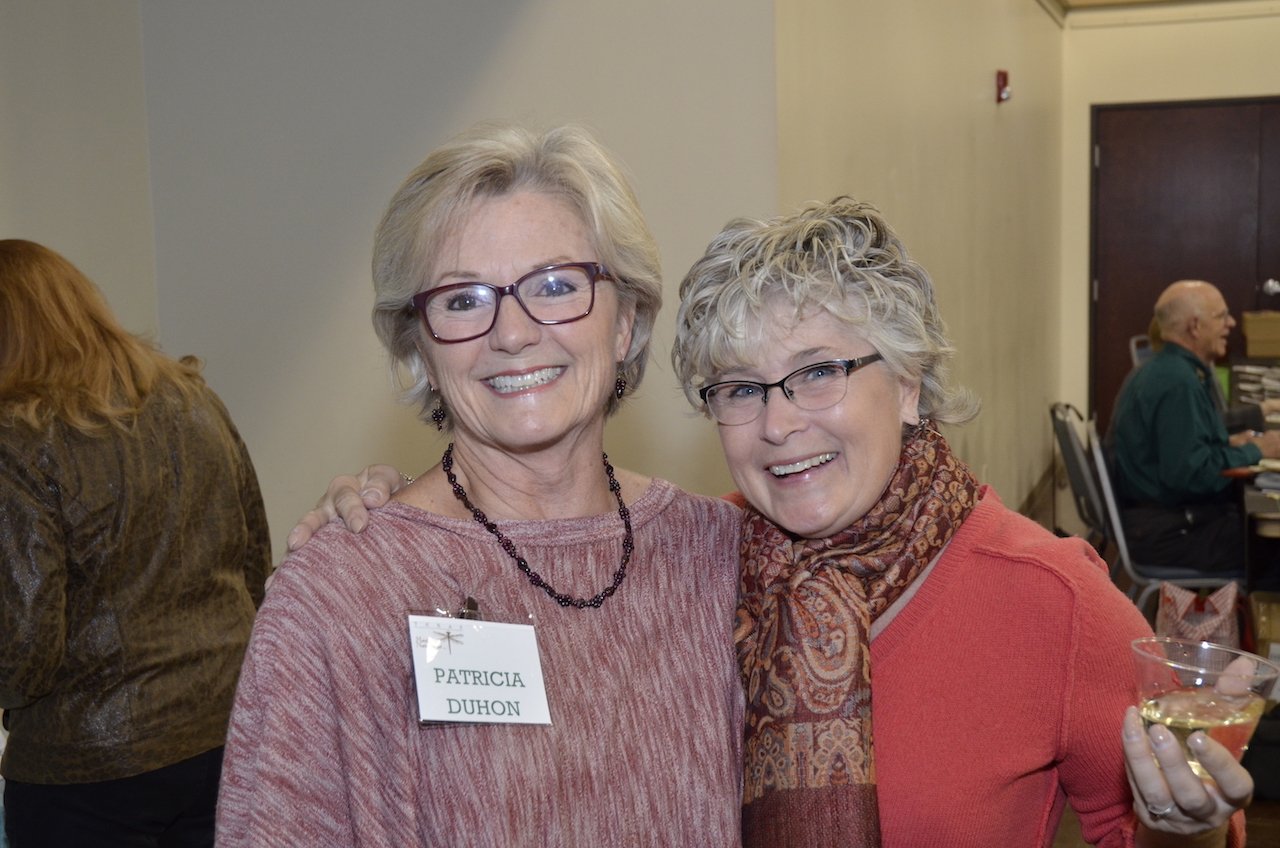
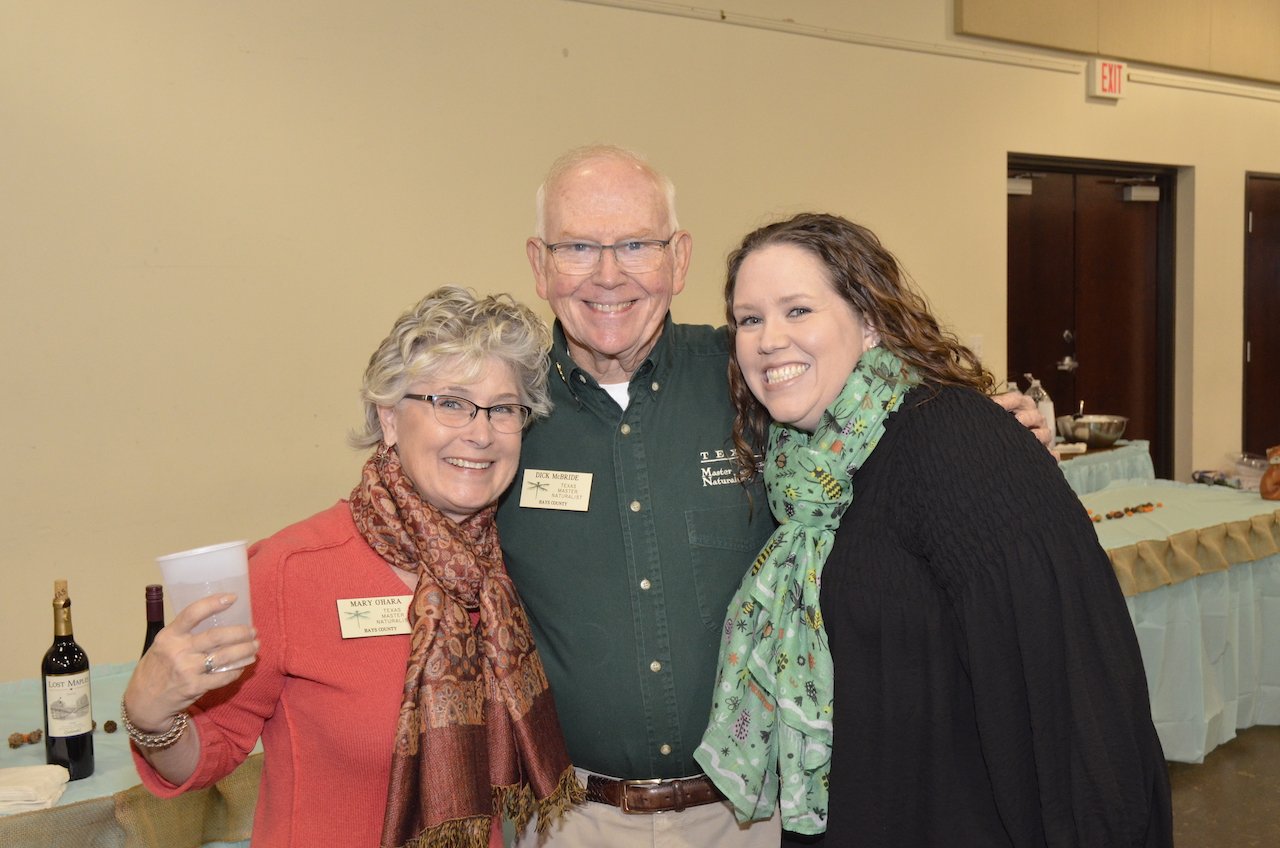
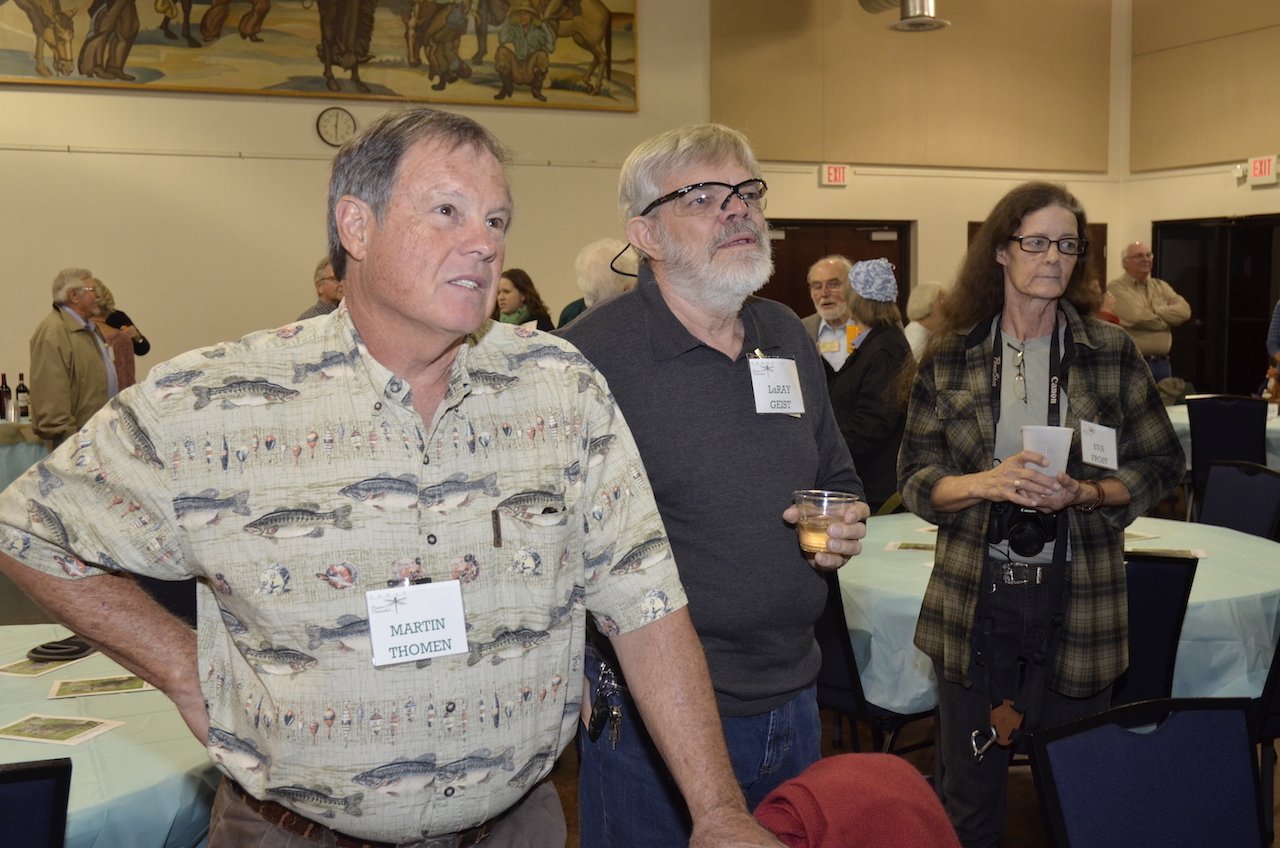
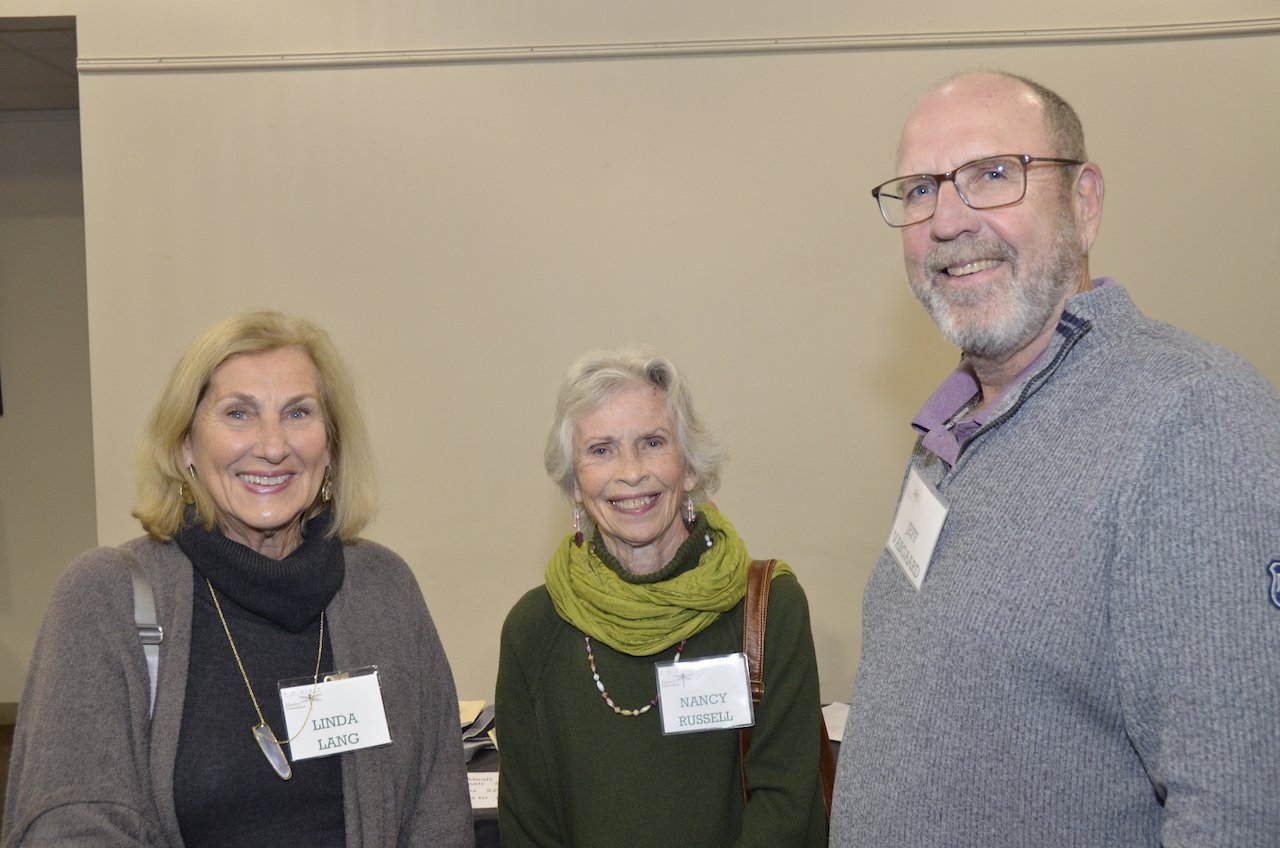
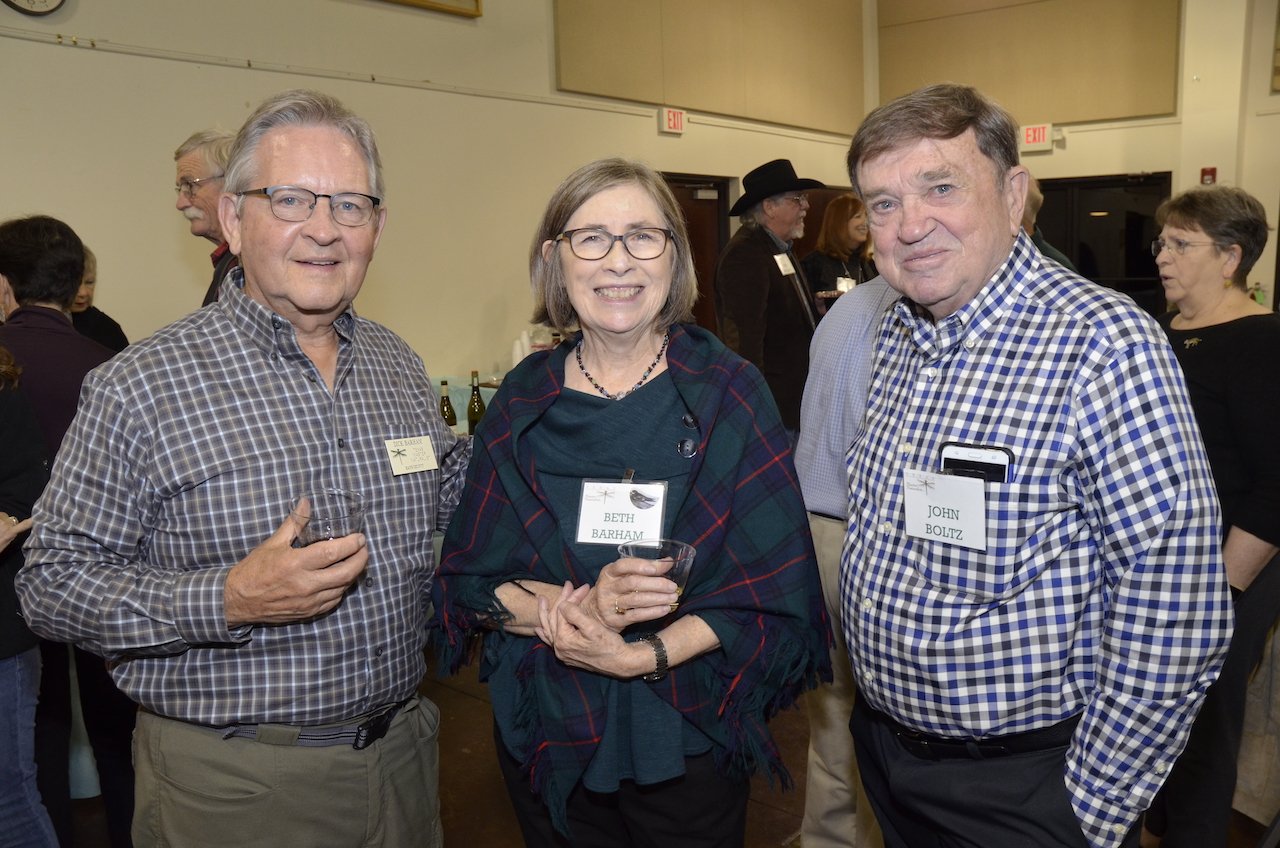
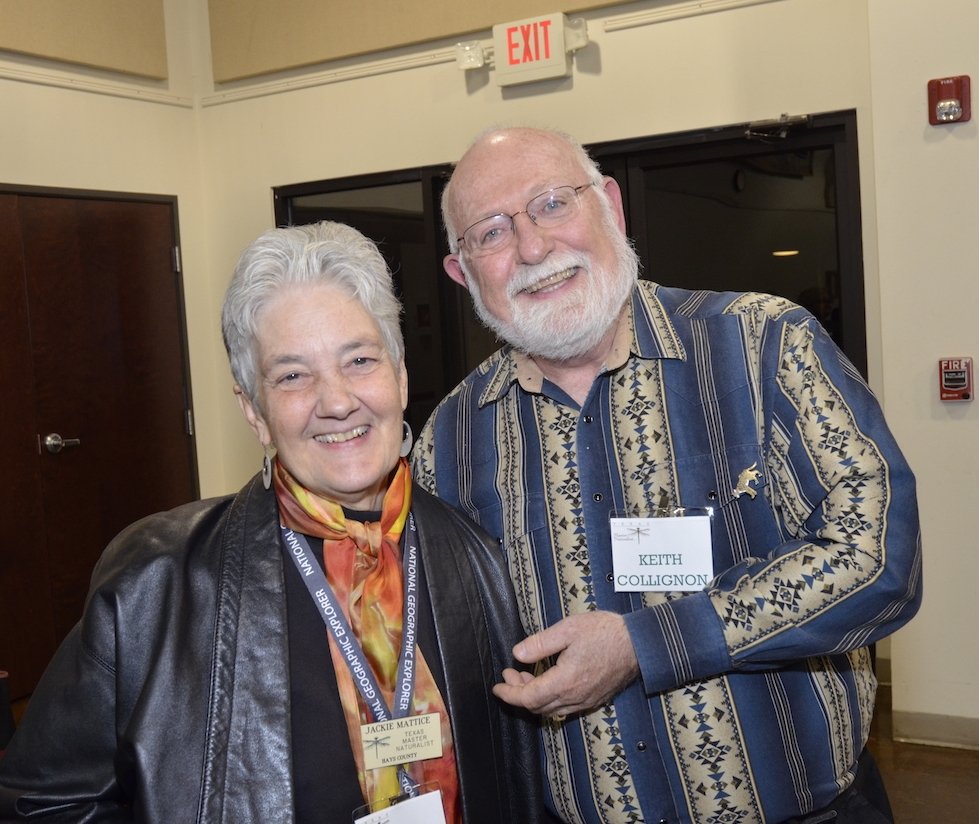
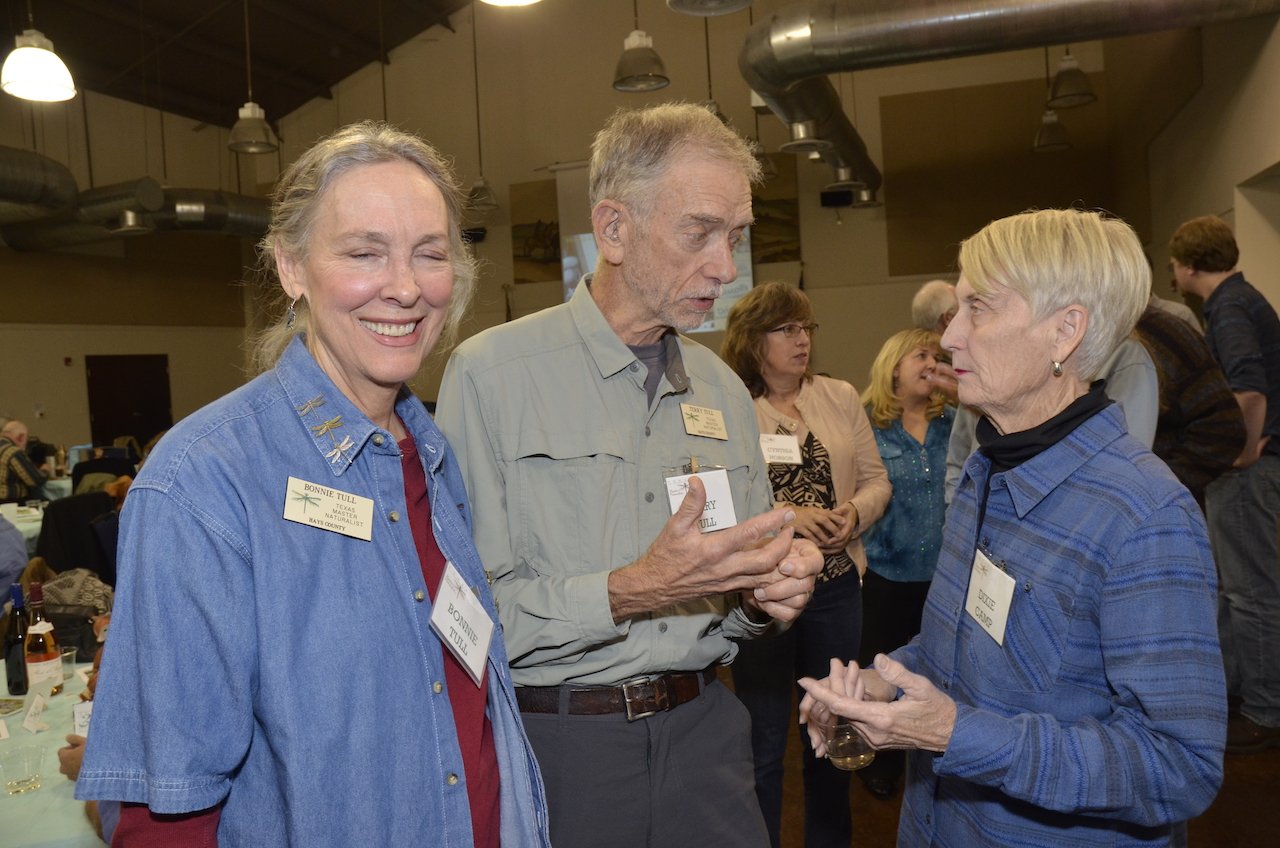




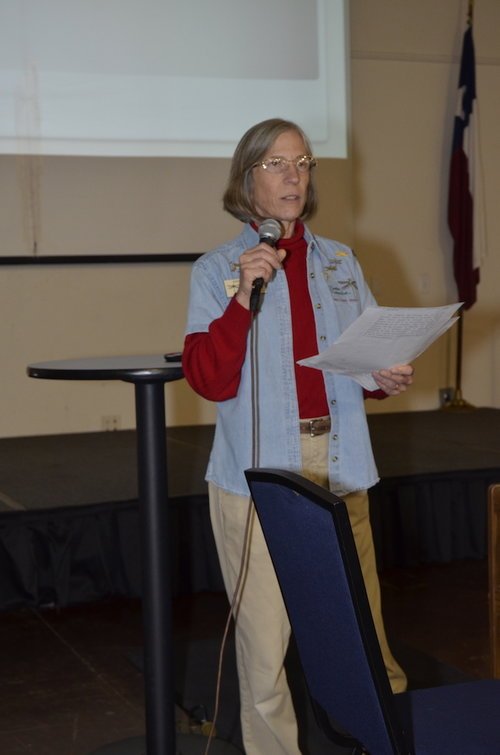
AWARDS
Click link for complete list of
HCMN Awards & Achievements.



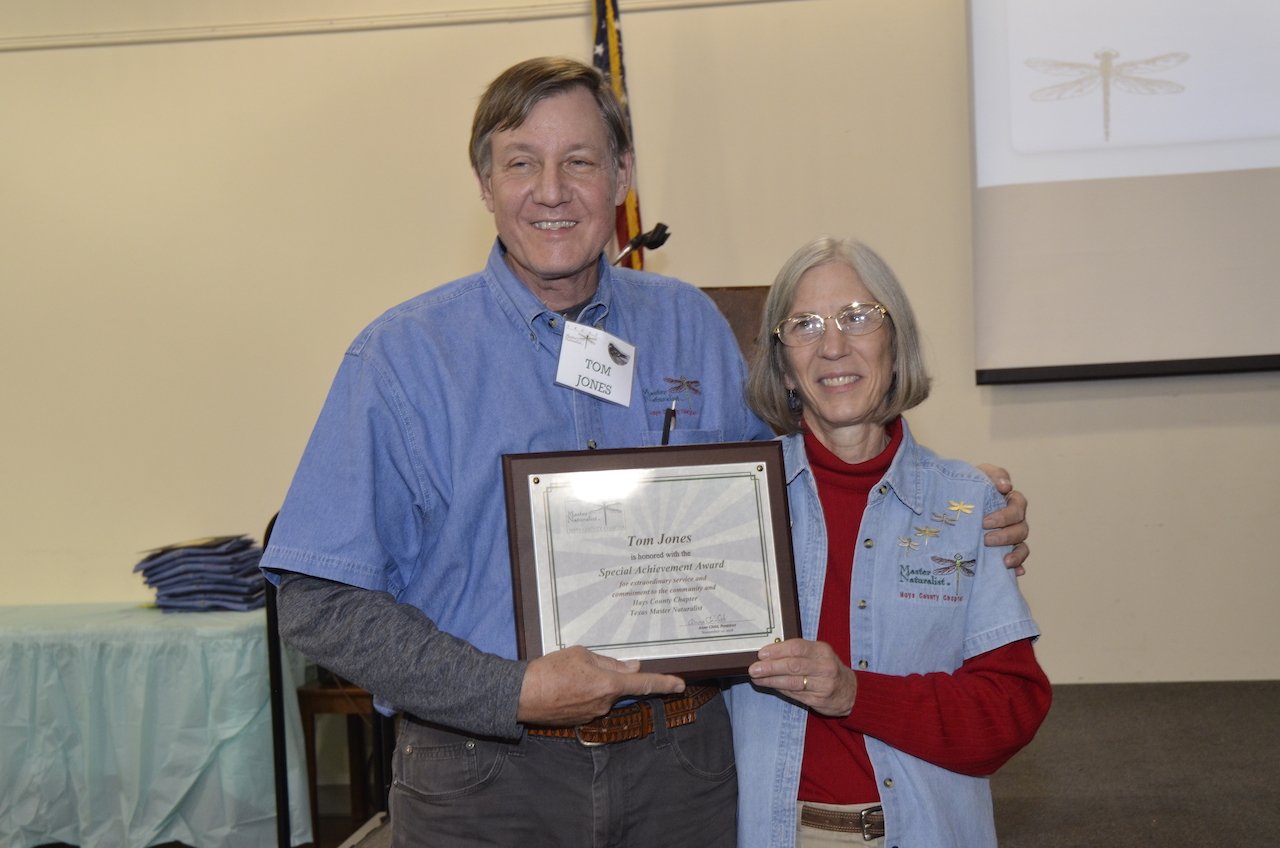

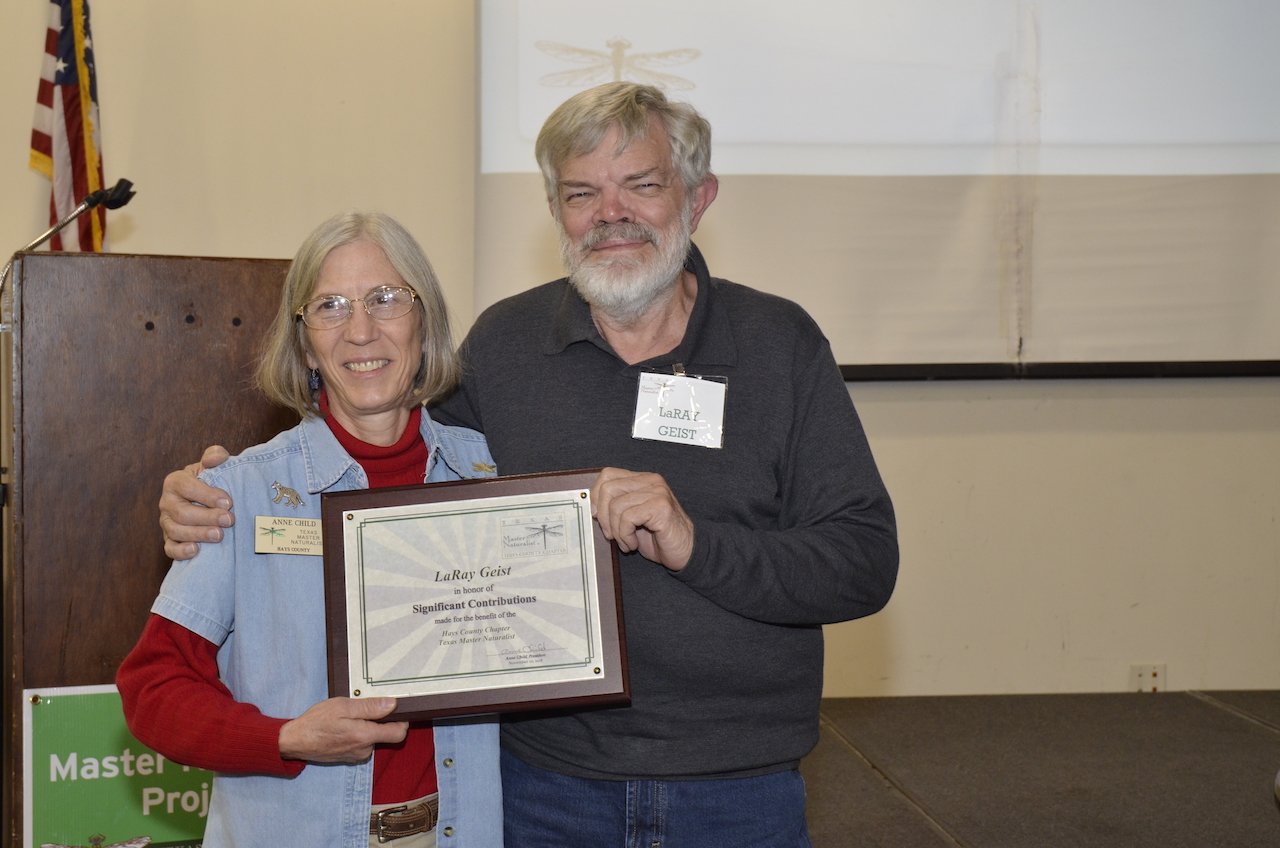
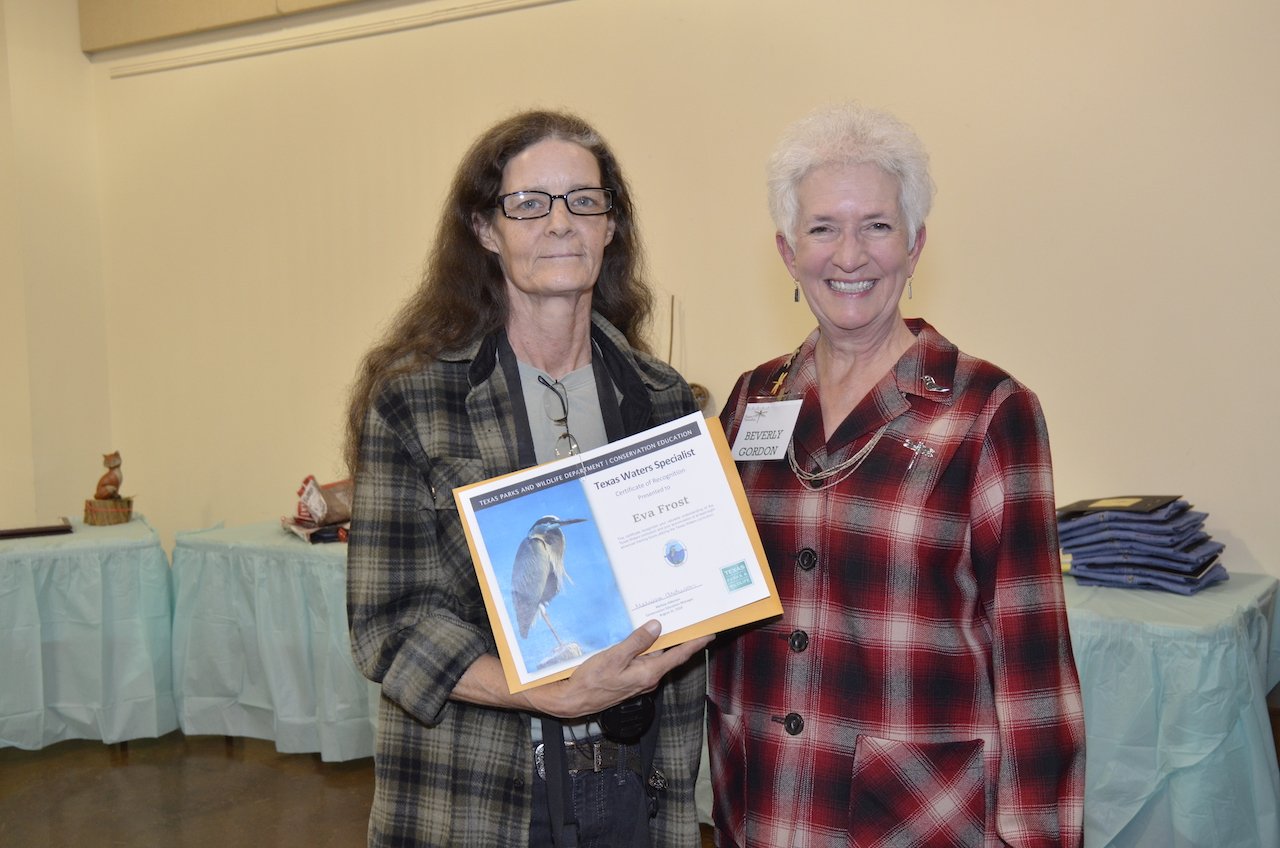




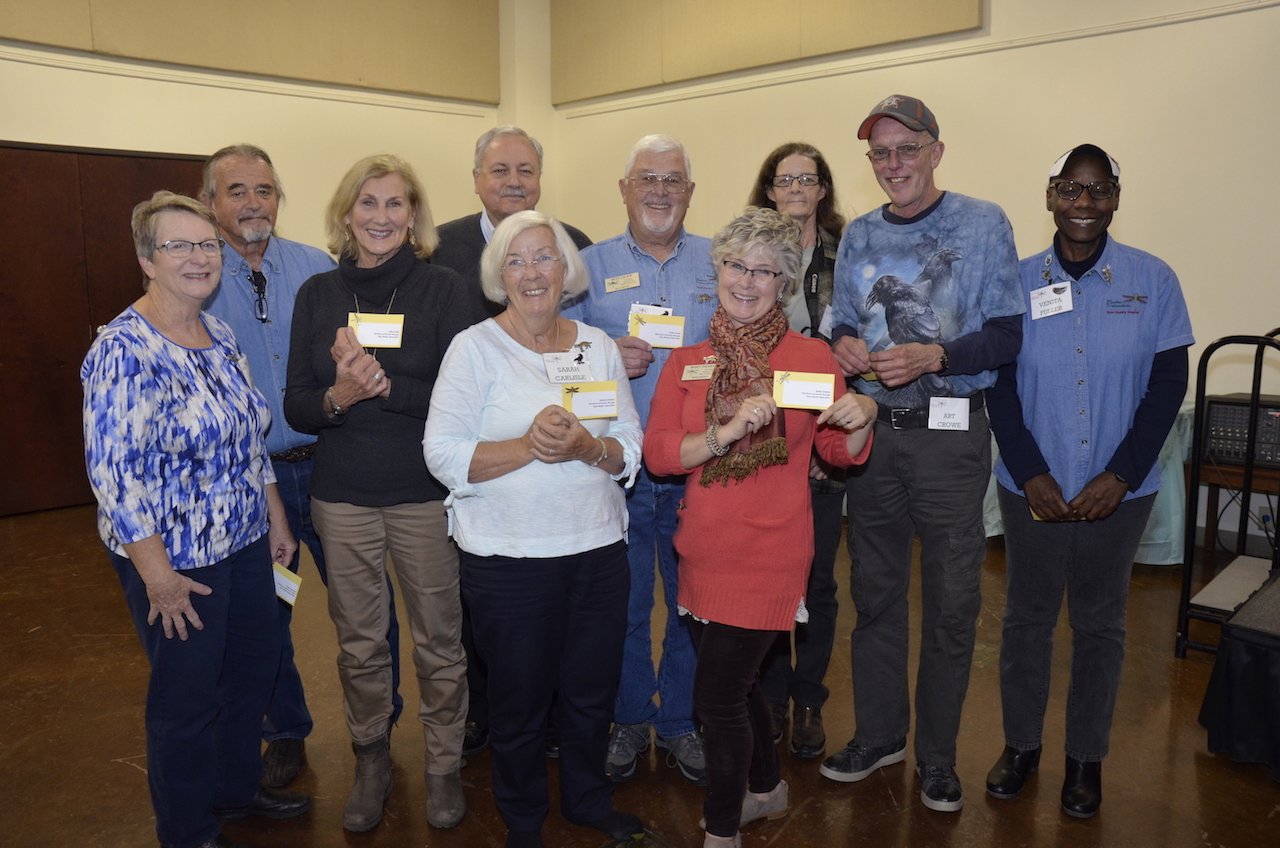

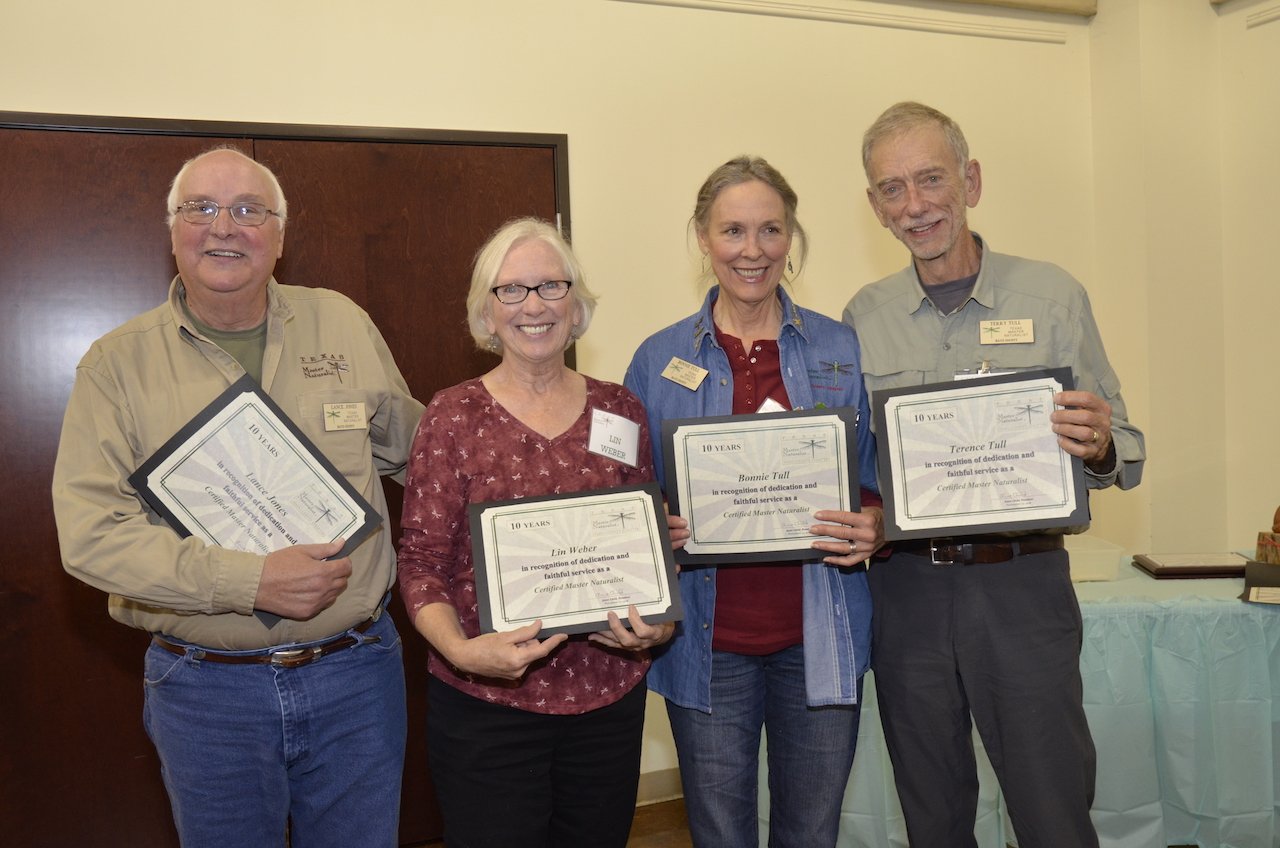
HCMN Board
I recorded this video in Henly (10 mi. west of Dripping Springs) on October 31, 2018. It was at a house on top of a hill overlooking canyons with woody areas and rocky streams all around. The alligator lizard is common but seldom seen. It lives in the scrub vegetation and rocky terrain, typical in Hays County. It is the largest lizard in Texas and one of the largest species of alligator lizard in the world. It has a lifespan of about 15 years and grows to approximately 20-24” in length. Many cultures consider them to be venomous, but they are not.
It is a diurnal lizard found in the central region of the state of Texas and south into Mexico. It has strong tail, weak legs and yellow eyes with closable eyelids. Its typical diet includes ground beetles, spiders, grasshoppers, crickets and small rodents. They occasionally eat small birds. It mates year round, has good vision, and lays eggs (sometimes in rodent burrows).
Jo Korthals
“Before and After” photos of our center piece from the Gala. Something to do on a rainy day!









